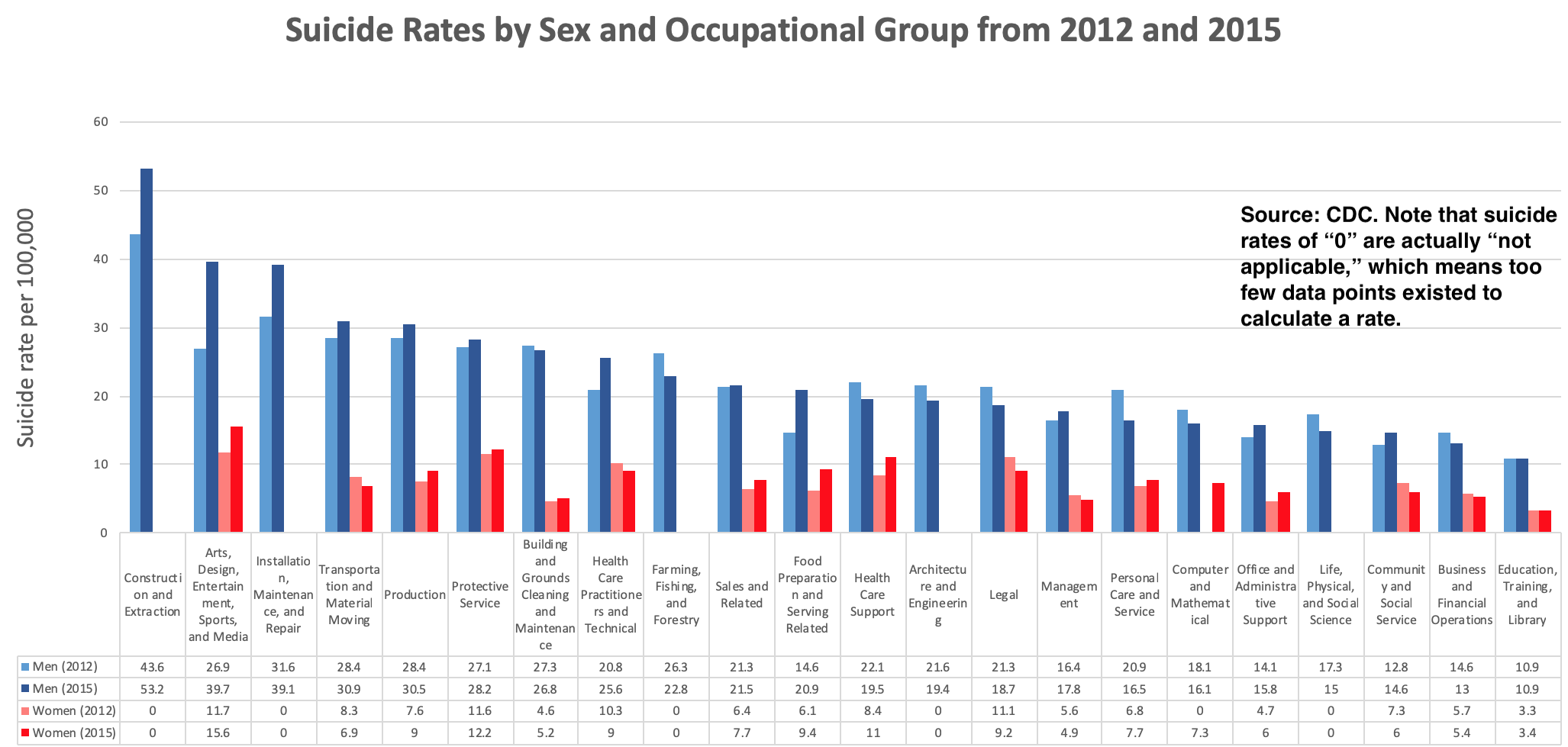Suicide rates are up in the United States. In some places, they are way up.
Last year, we reported on the urban-rural divide for suicide. In rural America, the suicide rate increased by 40% from 1999 to 2015. Cities experienced a smaller increase, closer to 10%. Overall, suicides increased from 12.2 per 100,000 to 15.7 per 100,000, an increase of just under 30%.
In an effort to better understand who is committing suicide and why, the CDC collects data from 17 states on the occupational group of the deceased. The chart below depicts their findings. (Suicide rates for men are in blue, and suicide rates for women are in red. The lighter shade represents 2012, while the darker shade represents 2015.)

There are several points worth making. First, men are much more likely to commit suicide than women, and this pattern held for all occupational groups. (Note that suicide rates shown as "0" are actually not calculated because too few data points existed to determine a rate.)
Second, the deadliest occupational group for men was "construction and extraction," with a suicide rate of 53.2 per 100,000 in 2015. For women, the deadliest group was "arts, design, entertainment, sports, and media," with a suicide rate of 15.6 per 100,000.
Third, the biggest difference in suicide rate between men and women occurred in the "building and grounds cleaning and maintenance" group, with men being more than five times as likely as women to commit suicide. The smallest difference was in "health care support," with men being only 1.8 times as likely to commit suicide.
What to Make of the Data?
The causes of suicide are complex. It is not possible to draw any firm conclusions based solely on occupational data. Indeed, there is a link between education level and socioeconomic status and suicide, which could at least partially be reflected in these numbers. Also, because a suicide attempt is often done on an impulse, the data could reflect differences between access to lethal means. (In other words, it's easier to commit suicide if a person works with heavy machinery rather than in a library.)
Because people spend so much time at work, the CDC recommends that employers emphasize suicide prevention programs. It certainly couldn't hurt.
Source: Peterson C, Stone DM, Marsh SM, et al. "Suicide Rates by Major Occupational Group — 17 States, 2012 and 2015." MMWR 67 (45): 1253-1260. Published: 16-Nov-2018. DOI: 10.15585/mmwr.mm6745a1




